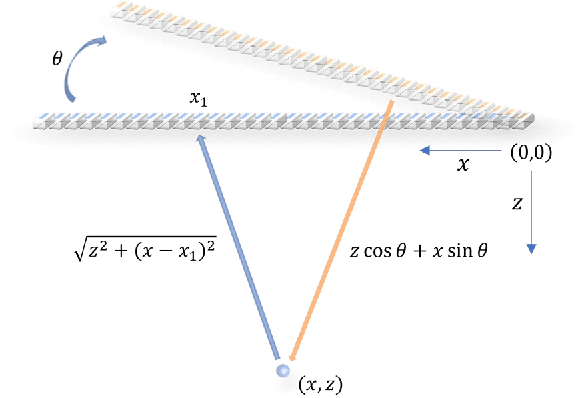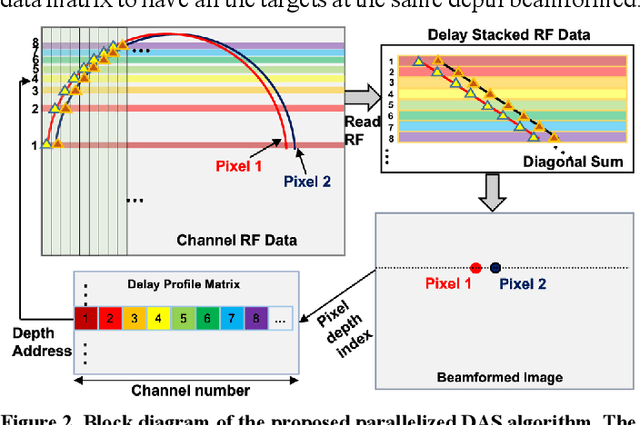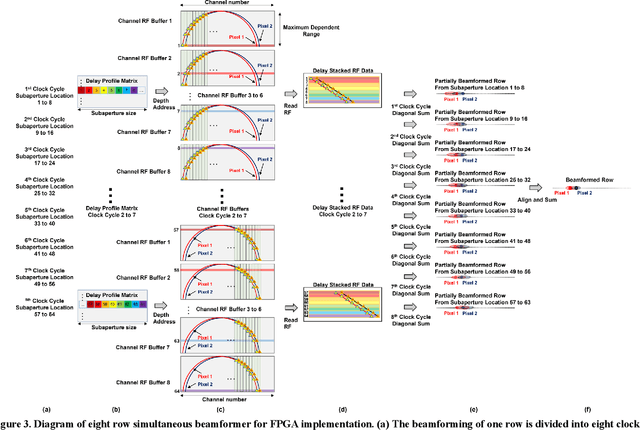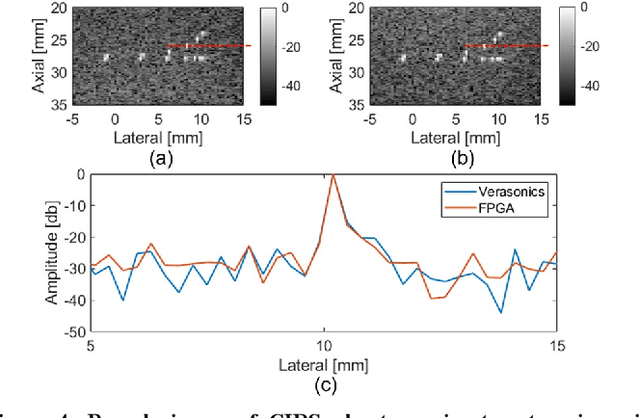Qi You
High-resolution Power Doppler Using Null Subtraction Imaging
Jan 09, 2023



Abstract:To improve the spatial resolution of power Doppler (PD) imaging, we explored null subtraction imaging (NSI) as an alternative beamforming technique to delay-and-sum (DAS). NSI is a nonlinear beamforming approach that uses three different apodizations on receive and incoherently sums the beamformed envelopes. NSI uses a null in the beam pattern to improve the lateral resolution, which we apply here for improving PD spatial resolution both with and without contrast microbubbles. In this study, we used NSI with singular value decomposition (SVD)-based clutter filtering and noise equalization to generate high-resolution PD images. An element sensitivity correction scheme was also performed to further improve the image quality of PD images using NSI. First, a microbubble trace experiment was performed to quantitatively evaluate the performance of NSI based PD. Then, both contrast-enhanced and contrast free ultrasound data were collected from a rat brain. Higher spatial resolution and image quality were observed from the NSI-based PD microvessel images compared to microvessel images generated by traditional DAS-based beamforming.
Towards a real-time continuous ultrafast ultrasound beamformer with programmable logic
Aug 06, 2022



Abstract:Ultrafast ultrasound imaging is essential for advanced ultrasound imaging techniques such as ultrasound localization microscopy (ULM) and functional ultrasound (fUS). Current ultrafast ultrasound imaging is challenged by the ultrahigh data bandwidth associated with the radio frequency (RF) signal, and by the latency of the computationally expensive beamforming process. As such, continuous ultrafast data acquisition and beamforming remain elusive with existing software beamformers based on CPUs or GPUs. To address these challenges, the proposed work introduces a hybrid solution composed of an improved delay and sum (DAS) algorithm with high hardware efficiency and an ultrafast beamformer based on the field programmable gate array (FPGA). Our proposed method presents two unique advantages over conventional FPGA-based beamformers: 1) high scalability that allows fast adaptation to different FPGA platforms; 2) high adaptability to different imaging probes and applications thanks to the absence of hard-coded imaging parameters. With the proposed method, we measured an ultrafast beamforming frame rate of over 3.38 GPixels/second. The performance of the proposed beamformer was compared with the software beamformer on the Verasonics Vantage system for both phantom imaging and in vivo imaging of a mouse brain. Multiple imaging schemes including B-mode, power Doppler and ULM were evaluated with the proposed solution.
 Add to Chrome
Add to Chrome Add to Firefox
Add to Firefox Add to Edge
Add to Edge